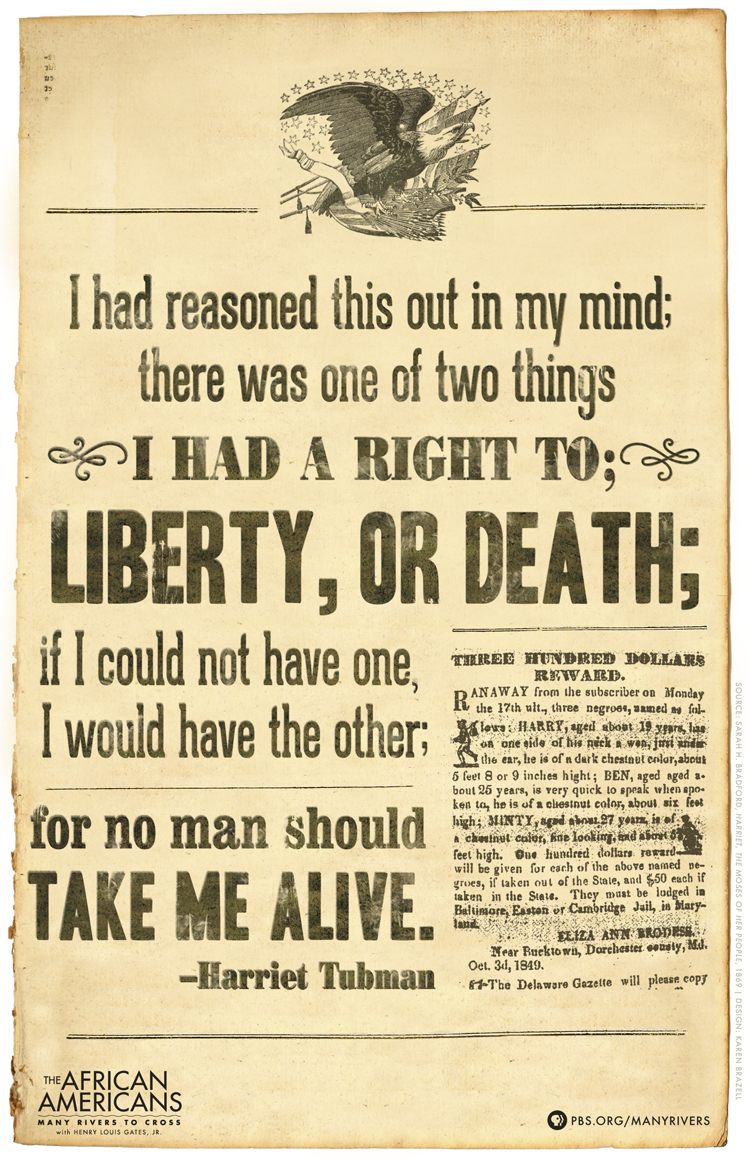
Harriet Tubman
Born a slave in Maryland’s Dorchester County around 1820, Harriet Tubman escaped to the North in 1849 out of fear that she was to be sold to another plantation. Shortly after her escape, she became one of the Underground Railroad’s most famous conductors. For the next decade, she returned to the South approximately 13 times and helped an estimated 70 slaves, including multiple family members, reach freedom. Abolitionist William Lloyd Garrison called her “Moses” after the Biblical prophet who led the Jews out of bondage from Egypt and Frederick Douglass said that “Excepting John Brown—of sacred memory—I know of no one who has willingly encountered more perils and hardships to serve our enslaved people than [Harriet Tubman].” Though a cash reward was offered for Tubman’s capture, she was never caught. She served as a nurse, scout and spy for the Union during the Civil War. After the war, Tubman moved to Auburn, New York, where she lived until her death in 1913.
Find educational resources related to this program - and access to thousands of curriculum-targeted digital resources for the classroom at PBS LearningMedia.
Visit PBS Learning Media





